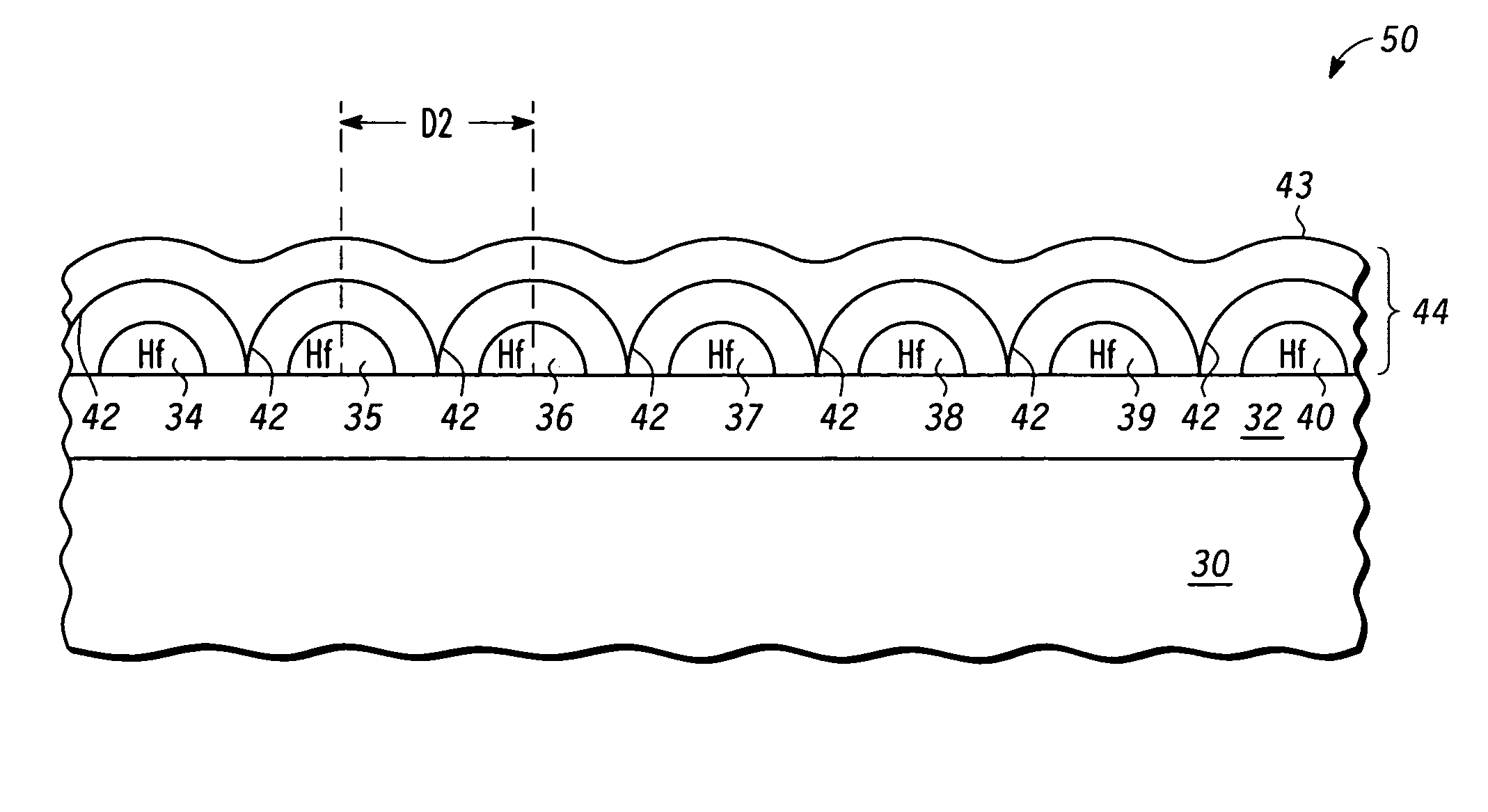Method for treating a semiconductor surface to form a metal-containing layer
a metal-containing layer and semiconductor technology, applied in the field of semiconductor processing, can solve the problems of non-planar surface, degrade device performance, and challenge the scalability of thin gate dielectric films
- Summary
- Abstract
- Description
- Claims
- Application Information
AI Technical Summary
Benefits of technology
Problems solved by technology
Method used
Image
Examples
Embodiment Construction
[0012]Through the use of a metal treatment of an exposed surface, the reactivity of nucleation sites may be increased for the subsequent ALD formation of a metal-containing layer. In one embodiment, the metal treatment is performed so that a uniformly spaced distribution of nucleation sites results where each nucleation site has increased reactivity. This may allow for a thinner continuous metal-containing layer in which a reduced number of voids is formed. This may therefore allow for the ability to increase scalability, improve electrical properties, and reduce leakage of thin high K gate dielectrics.
[0013]Illustrated in FIG. 3 is a semiconductor device 50 in which nucleation sites are formed. In FIG. 3, a semiconductor substrate 30 is provided. In one form substrate 30 is a bulk semiconductor such as silicon, silicon germanium, or germanium, but any of various semiconductor materials may be used to implement substrate 30. Alternatively, substrate 30 may be implemented as a silico...
PUM
| Property | Measurement | Unit |
|---|---|---|
| pressure | aaaaa | aaaaa |
| temperature | aaaaa | aaaaa |
| dissolving | aaaaa | aaaaa |
Abstract
Description
Claims
Application Information
 Login to View More
Login to View More - R&D
- Intellectual Property
- Life Sciences
- Materials
- Tech Scout
- Unparalleled Data Quality
- Higher Quality Content
- 60% Fewer Hallucinations
Browse by: Latest US Patents, China's latest patents, Technical Efficacy Thesaurus, Application Domain, Technology Topic, Popular Technical Reports.
© 2025 PatSnap. All rights reserved.Legal|Privacy policy|Modern Slavery Act Transparency Statement|Sitemap|About US| Contact US: help@patsnap.com



